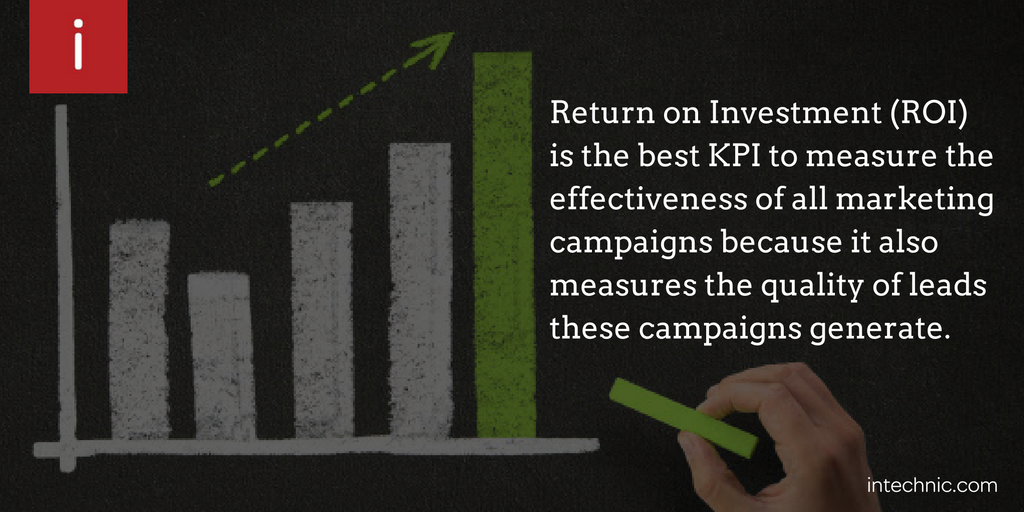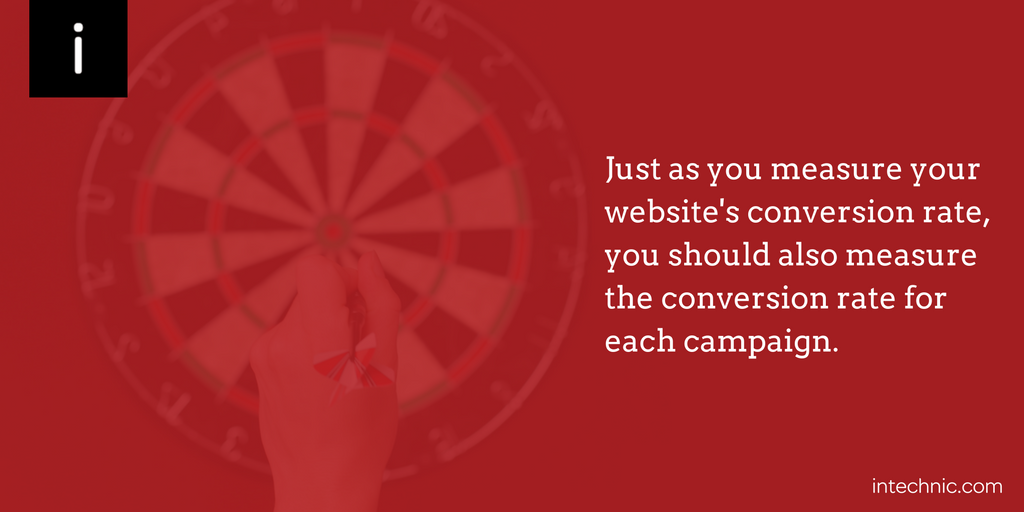Marketing Effectiveness - How to Measure Your Marketing Success
 Measurement is the key to optimizing any process, and marketing campaigns are no exception. When you establish and measure key performance indicators (KPIs) for your marketing campaigns, you can clearly see what works and what doesn't. You can then direct your marketing dollars toward the most effective campaigns to achieve marketing success. Here are some of the common KPIs you should measure for each of your campaigns, regardless of the type, channel or medium:
Measurement is the key to optimizing any process, and marketing campaigns are no exception. When you establish and measure key performance indicators (KPIs) for your marketing campaigns, you can clearly see what works and what doesn't. You can then direct your marketing dollars toward the most effective campaigns to achieve marketing success. Here are some of the common KPIs you should measure for each of your campaigns, regardless of the type, channel or medium:
Return on Investment (ROI)
Return on Investment measures the sales revenue a campaign brings on every dollar spent. For example, if John spent $1,000 on a campaign that generated $5,000 in sales, John's ROI is $4,000 or 400%. This is the best KPI to measure the effectiveness of all marketing campaigns because it also measures the quality of leads these campaigns generate. 
Cost per Win (Sale)
Cost per Win measures the expense of each sale. Let's say that John's campaign resulted in five sales. With a $1,000 budget, that is $200 per sale. This important metric compares the campaigns to each other. 
Cost per Lead
Cost per Lead measures the cost-effectiveness of marketing campaigns. This metric focuses entirely on the leads generated by the campaign. Since it factors out the sales process it doesn't measure the quality of leads. Using the example from above, let's say the five sales resulted from 10 leads. With the same $1,000 budget, that is a cost of $100 per lead. 
Conversion Rate (or Goal Completion Rate)
Just as you measure your website's conversion rate (the percentage of visitors who have converted into leads or customers), you should also measure the same for individual campaigns. For example, if a campaign brought in 1,000 visitors, from which John got 10 leads, that is a 1% conversion rate. The conversion rate combined with bounce rate and other behavior information reveals a great deal about the quality of traffic to the website. 
Incremental Sales
Incremental Sales measures the contribution of marketing efforts toward the sales numbers. Incremental sales show the effectiveness of your marketing campaigns in generating sales, and are a great way to compare your marketing efforts. For example, if John's sales for the month were $500,000, the campaign from above resulted in 1% of his total sales. 
Purchase Funnel
Using Google Analytics (or a similar tool) you should also measure and analyze the sales process for the leads generated by each marketing campaign (for example, conversions and percentages for visits, interactions, leads and sale). This can help you find drop off points that can tell you more about your traffic or your sales cycle. 
Customer Lifetime Value
Customer Lifetime Value measures the lifetime value of your customers by utilizing the following formula: "average sale per customer" multiplied by "average number of times a customer buys per year" multiplied by "average retention time in years for a typical customer." This data will certainly take time to compile, but by calculating the CLV, you can see which of the marketing efforts generate your best customers. 
Multi-Channel Funnels and Attribution
While you want to measure each of your campaigns and marketing channels separately, in reality there will always be overlaps. For example, a customer learns about your website on social media and then returns to it via a search engine. If you want to see a more precise picture of your marketing, you should use multi-channel funnels and apply attribution modeling.  For more great ways to measure your marketing efforts, download the free guide below:
For more great ways to measure your marketing efforts, download the free guide below: 







